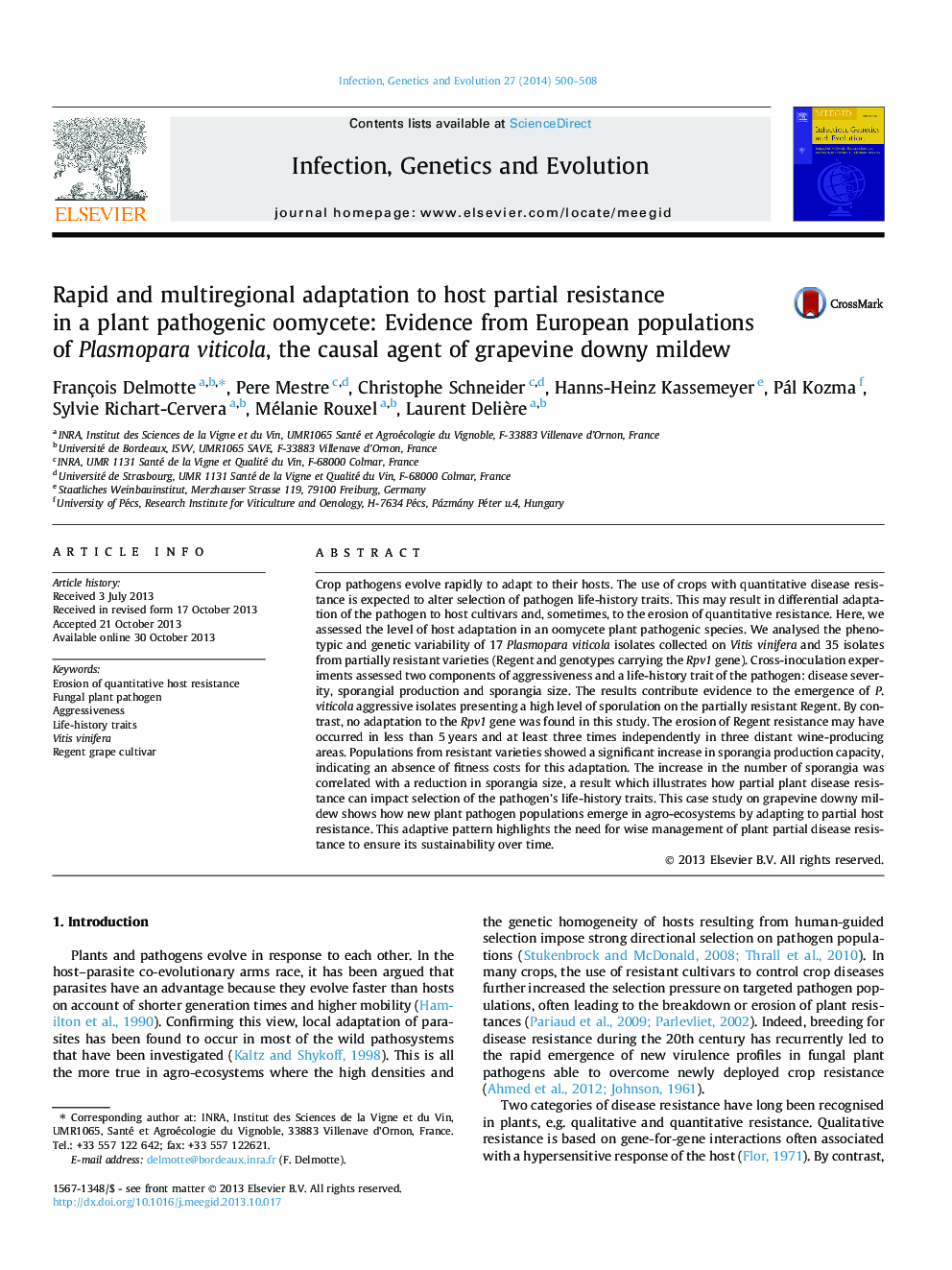| کد مقاله | کد نشریه | سال انتشار | مقاله انگلیسی | نسخه تمام متن |
|---|---|---|---|---|
| 5909846 | 1570176 | 2014 | 9 صفحه PDF | دانلود رایگان |

- We have assessed the level of host adaptation of Plasmopara viticola populations.
- We found that aggressive isolates have emerged on the partially resistant cultivar Regent.
- The erosion of Regent resistance occurred three times independently and in less than 5Â years.
- No fitness costs was associated to this adaptation to partial resistance of grapevine.
- Evidence for a trade-off between the size and the number of sporangia is reported.
Crop pathogens evolve rapidly to adapt to their hosts. The use of crops with quantitative disease resistance is expected to alter selection of pathogen life-history traits. This may result in differential adaptation of the pathogen to host cultivars and, sometimes, to the erosion of quantitative resistance. Here, we assessed the level of host adaptation in an oomycete plant pathogenic species. We analysed the phenotypic and genetic variability of 17 Plasmopara viticola isolates collected on Vitis vinifera and 35 isolates from partially resistant varieties (Regent and genotypes carrying the Rpv1 gene). Cross-inoculation experiments assessed two components of aggressiveness and a life-history trait of the pathogen: disease severity, sporangial production and sporangia size. The results contribute evidence to the emergence of P. viticola aggressive isolates presenting a high level of sporulation on the partially resistant Regent. By contrast, no adaptation to the Rpv1 gene was found in this study. The erosion of Regent resistance may have occurred in less than 5Â years and at least three times independently in three distant wine-producing areas. Populations from resistant varieties showed a significant increase in sporangia production capacity, indicating an absence of fitness costs for this adaptation. The increase in the number of sporangia was correlated with a reduction in sporangia size, a result which illustrates how partial plant disease resistance can impact selection of the pathogen's life-history traits. This case study on grapevine downy mildew shows how new plant pathogen populations emerge in agro-ecosystems by adapting to partial host resistance. This adaptive pattern highlights the need for wise management of plant partial disease resistance to ensure its sustainability over time.
Journal: Infection, Genetics and Evolution - Volume 27, October 2014, Pages 500-508